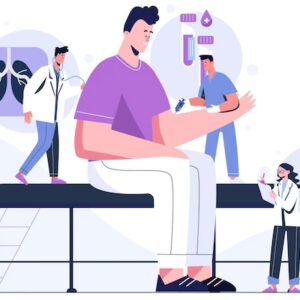Depiction
Preceding getting blood specimens, the attendant ought to evaluate the patient, noticing factors that may influence test outcomes, including drugs, pregnancy, age, and sex. Ensure the patient has adhered to any uncommon directions, which could incorporate fasting for various hours or taking a medicine at a specific time.
Patients ought to likewise be evaluated for their insight level with respect to the tests requested. Train the patient as required about the test and the methodology itself. Albeit most blood work does not require any uncommon assent, a few tests, similar to those for HIV, generally do. If necessary, acquire agree before gathering the specimen.
There are four patient “rights” the medical caretaker ought to think about when gathering blood specimens. These rights are:
Right specimen. Ensure the specimen gathered in the specimen requested.
Right time. Certain blood tests must be acquired at explicit occasions. For instance, when drawing anti-infection levels, trough specimens ought to be gotten quickly before the following portion. An opportunity to draw pinnacle levels might be reliant upon whether the anti-infection is given intravenously, orally, or intramuscularly.
Right understanding. Continuously check the patient’s distinguishing proof before drawing a blood specimen. The individual drawing the specimen ought to likewise mark the compartment it is drawn into.
Right strategy. Continuously pursue widespread precautions when playing out a venipuncture.
Before puncturing, the patient’s skin ought to be cleaned. Povidone-iodine (Betadine) can be utilized, or liquor, except if an ETOH level is being drawn (liquor on the skin may hoist an ETOH result). Povidone-iodine ought to consistently be utilized if blood societies are to be drawn.
Procedures to discover a vein incorporate bringing down the arm into a needy position to help enlarge the veins; applying warm douses on the arm to improve venous expansion; and having the patient open and close the clench hand in the wake of applying a tourniquet. The human services supplier can likewise endeavor to palpate a vein where it is relied upon to be since veins can regularly be felt, yet not seen. Corridors throb and have a thick divider. Thrombosed veins feel string like and roll effectively.
There are three veins in the antecubital (the internal or front surface of the lower arm) region that is proper for venipuncture: the average, cephalic, and basilic veins. The vein of decision is average since it is normally the nearest to the skin’s surface, the biggest, and for the most part the least difficult to cut. In the event that the antecubital locales can’t be gotten to, wrist and hand veins are likewise adequate for venipuncture.
Venipuncture is generally done utilizing a vacuum holder (Vacutainer) framework. This framework comprises of vacuumed specimen tubes, a needle, and a plastic holder. At the point when the cylinder is set into the holder and squeezed against the needle, negative weight results and blood is maneuvered into the cylinder. Ordinarily, a 21-measure needle is utilized to gather blood. Sporadically, contingent upon the test requested and explicit patient conditions, a bigger or littler distance across needle might be fitting. Never embed the needle at more prominent than a 30-degree point. Doing as such builds the probability of going through the vein and into those structures lying underneath, raising the odds of lasting damage to the patient.




